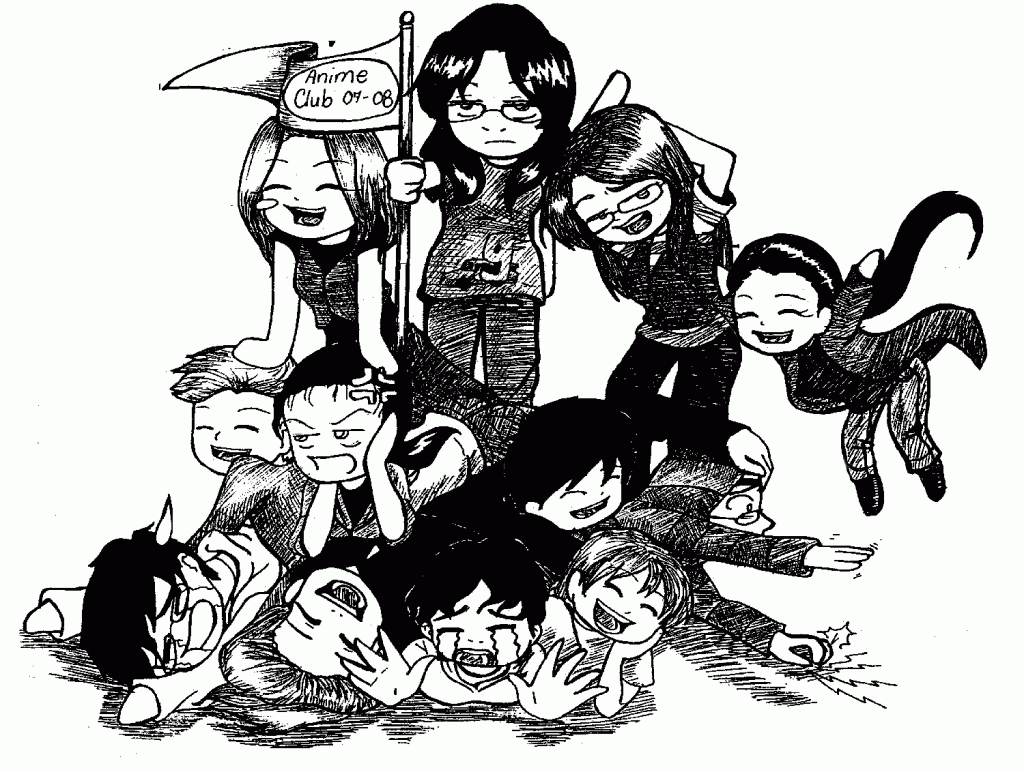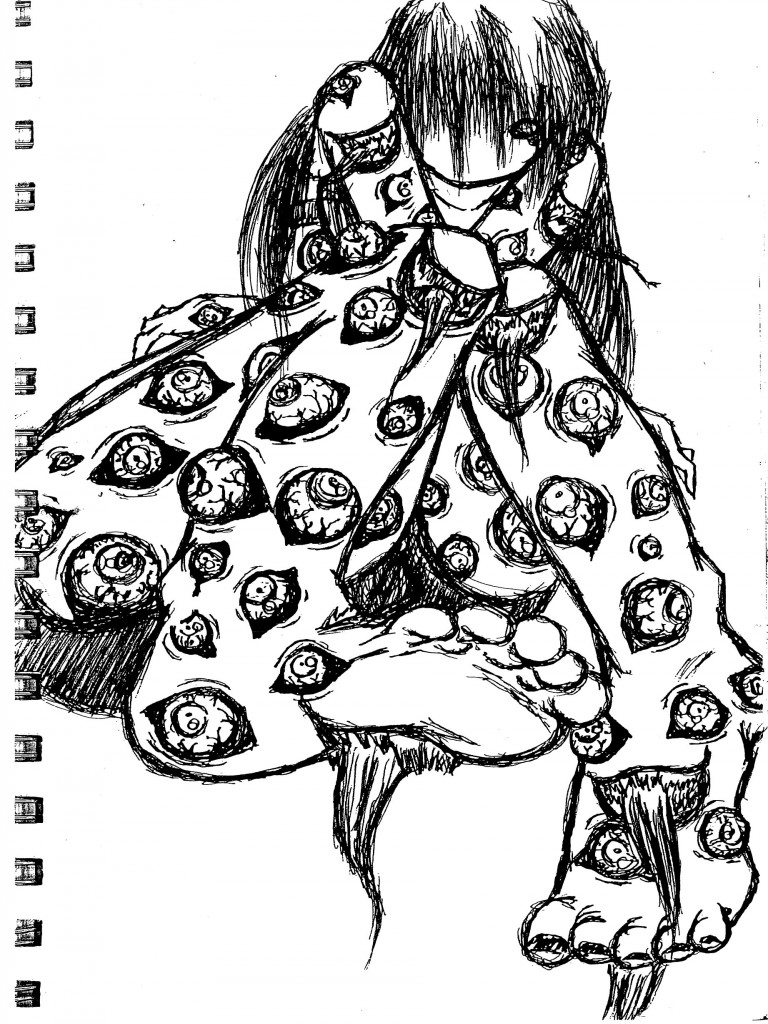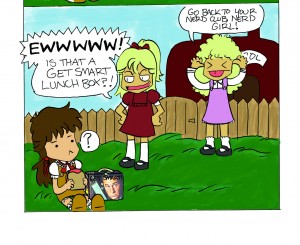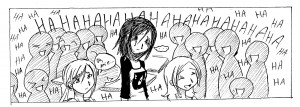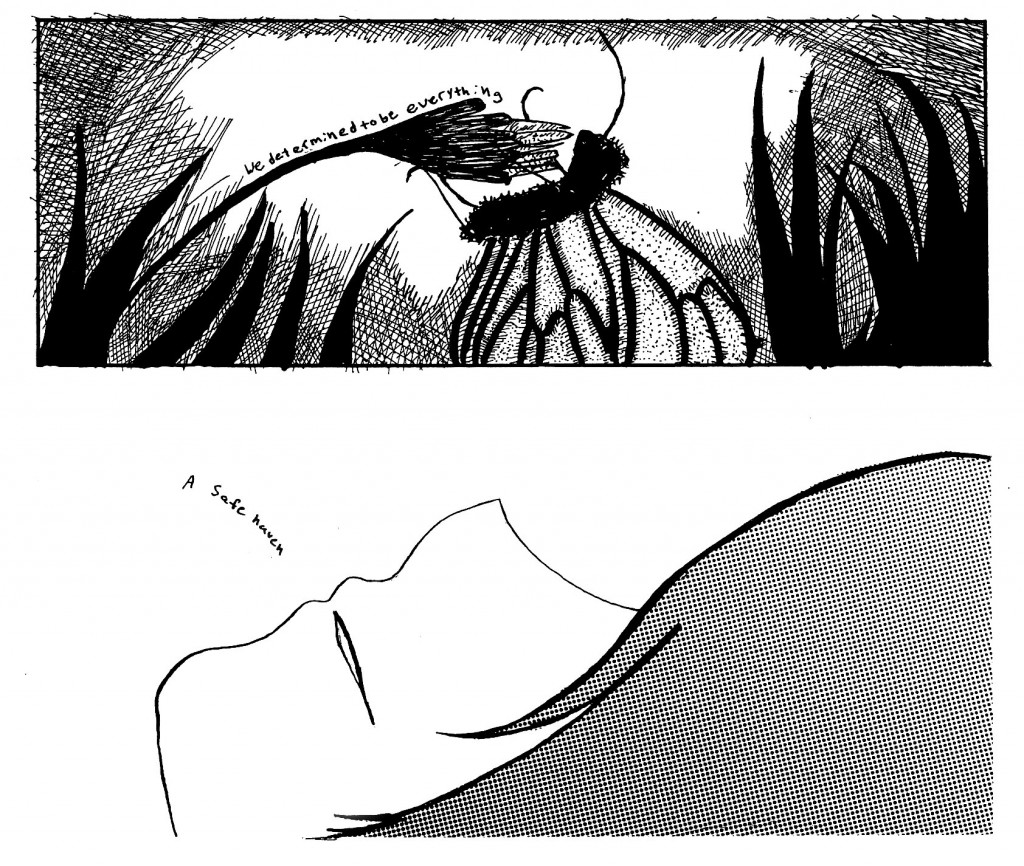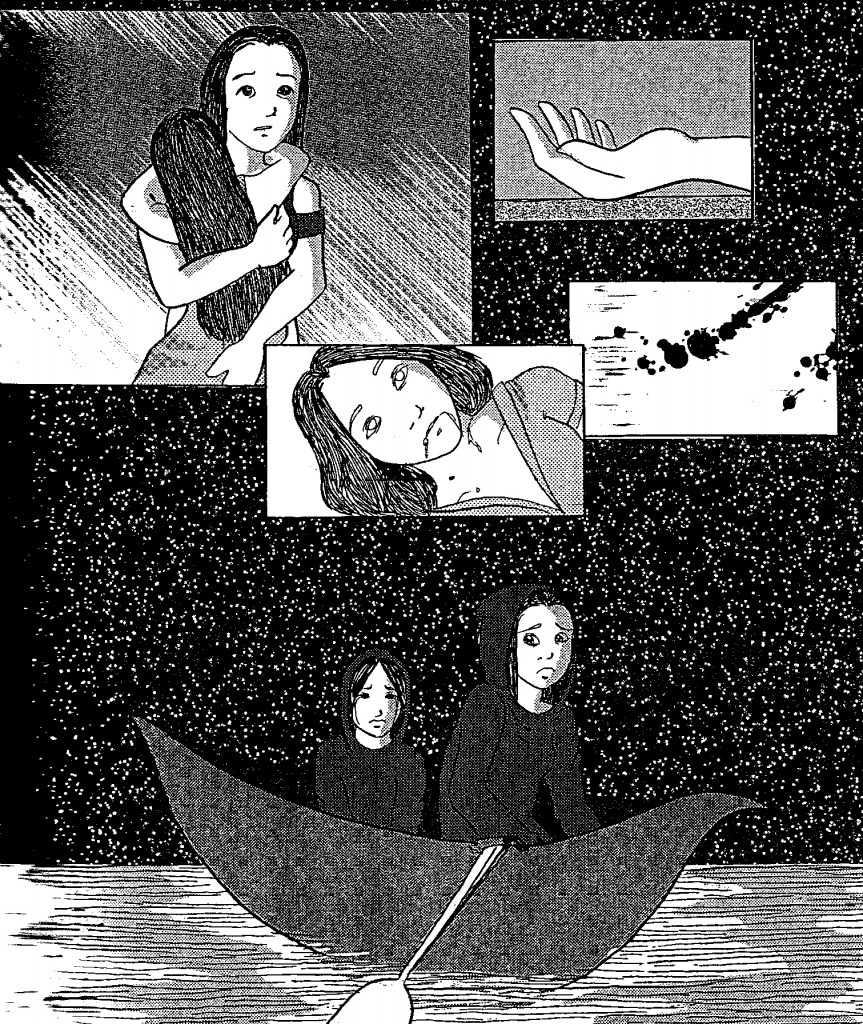Keira Lozeau- age 17
My first meeting as a high school teacher was almost five years ago to this date, mid-August, on a hot Washington afternoon. I was a new hire at a school district to the north of Seattle, and I was young at twenty five, still idealistic despite a rough student teacher period.
The room was spacious and beautiful, with large open windows and large group seating. The entire district’s staff of visual art teachers was present, and they were in the midst of a casual discussion as I entered, five minutes late.
“I mean, what do I do with those damn anime kids anyway?” the silver-haired teacher said slowly, shaking her head. The others laughed and sighed in sympathy.
“What do you mean?” I asked, before I realized I was drawing attention to myself, something I had vowed not to do anymore after my last educational employment experience.
Nicole Ham, age 17
Introductions were made, and more chitchat was had about the problem at hand, namely, the Damn Anime Kid. “They just wanna draw the same stuff over and over again. The big eyes, the tiny chins, pointy hair. Whatever.” Others commiserated. “I can’t tell when they’re copying other stuff or when it’s their own characters or what. And even if they say it’s their own characters, all of it looks the same anyway. It’s all virtually identical. So even if it’s technically original, they’re not learning anything anyway.”
At the time I just sat back and took it in, unbelieving. What do you do with those damn anime kids, huh? You mean, the kids that are interested in drawing? The ones that are interested in learning concrete skills that will help them tell stories, with an interest in the human body, in posture and proportion? Gosh, what is an art teacher to do with such challenging students?
As a half-baked cartoonist I had an advantage over my colleagues, and fortunately for me I was not above using this with my students. It was easy to see after even a few weeks of classes that many of the students that were dedicated to various manga, or just drew Yugioh over and over again, were also students that many times had difficult home lives. It isn’t difficult to imagine that a teenager with real problems at home would find refuge in fiction, and fiction inaccessible to their parents or less-dedicated peers would naturally have an even greater cachet.
Nikyla McLain- age 16
I found this perception of the of the manga or anime enthusiast as social leper simultaneously the closest to the truth and the least useful of the clichés surrounding these students. This was also the cliché most likely to be common knowledge, as evidenced by one teacher I knew who once explained to me the lineage of the otaku. “No, these kids have been around for a while. They just used to draw super heroes or whatever. Or sports cars. We still have some of those–the kid that just wants to draw the one view of the same race car over and over again. Then there were the dragon kids before that. Of course, we still have some of them too.”
After a few years of working with these students, both as a teacher and as adviser to the school’s Anime and Manga Club, I had the opportunity to give some presentations at state and other regional conferences, and I used it to talk about these students, whom I identified with and had a genuine desire to advocate for. I titled my presentation after that first teacher’s comment regarding these students–What Do I Do With Those Darn Anime Kids? The title was, in addition to being catchy, also ambiguous enough that I had a wide range of teachers attend, ranging from other club advisers that were looking for suggestions on what to do with their programs, to teachers that had a genuine hostility towards these students and their interests. And the ensuing discussions provided me with a broader perspective on secondary art school opinions regarding anime and manga, and more broadly, on sequential art in general.
-
J.J.- age 17
These opinions seemed to have less to do with the students and their interests than the teacher’s own art backgrounds. For teachers who had their formative art experiences in the art education system, representational art in general and any type of cartooning specifically didn’t address enough what they might consider to be “personal expression,” i.e. the idea of art as therapy or release. For these teachers, of which there are still a great deal, art is what happens without instruction, without stricture, and concerns with form, style or narrative are distractions from the true art experience.
There seemed to be just as many teachers whose formative art experiences took place in a more formal academic art background, and whether that background was based out of the studio or out of the art history classroom, it was very easy for them to dismiss budding cartoonists in their classrooms. After all, any comic is by nature illustration, and therefore not art. (I once walked into an upper-level high school art classroom where a well-meaning and very knowledgeable teacher was leading an oral dissection of the Andrew Wyeth painting “Christina’s World.” “So,” she said to them as I walked into the room, “Is Wyeth an illustrator? Or is he an artist?”) Having survived several years of fine arts training myself, this was not an unfamiliar attitude to me, but I was continually surprised to find it in the secondary school environment, especially considering the broad nature of the students we teachers were supposed to be serving.
-
Katelynn Orellana- age 17
Of course, there was a lot for me to be frustrated with too. Much of this was part of learning to readjust my expectations, realizing, for instance, that just because students are interested in reading comics, and say that they’re interested in making comics of their own, doesn’t necessarily mean that they will go through all of the necessary skill building and labor necessary to do so. The first year I was adviser to the club we barely managed to scrape together a publication, and it was a compromise in every way–padded with pin-ups and work with which the artists themselves were not satisfied. From the second year on I concentrated more on skills building and low-risk activities that had a high likelihood of success–the Scott McCloud-adapted “four hour comic” was among the most popular. (Four pages in four hours, with music and pizza and soda, and many kudos for those who crossed the finish line. Sometimes we tried a variation on this, dividing up into teams for the duration, with each team member having a clearly-defined role in the production. These usually turned out a little less crazed, but a little more visually punchy and thus more likely to be included in future publications.)
-
Five years and several hundred pages of student comics
But it’s not frustration that I remember now, looking back on my five years of working with art students, the club members, or members of the cartooning class I taught my last two years. It’s a feeling of real accomplishment–of having met students at their own level, at their own interests, and helping turn those interests inwards, helping identify and eventually obtain the skills that will bring them an outlet for their own stories, for their own burgeoning creativity. I remember lunches in my classroom, inking tutorials and jam comics. I remember watching four of the club members whipping out a twenty page comic in four days, each one of them taking on a different task. I remember how proud they were giving out copies of their comic anthology at an event at the Seattle Public Library, and the genuine enthusiasm the other cartoonists and comic fans had for their book. I remember when I finally realized how much I had learned from them, from their love and their interest, their tenacity and their promise. I remember when I realized that all the practice helping other people with their drawing had finally affected me as well. When I realized I was no longer an interested amateur, but a cartoonist capable of producing work I could be proud of.
So, what does one do with those damn anime kids? How about recognize that, as students that already have an interest and a passion, they’re several steps ahead of many of their peers. How about meeting them at their level. How about showing them how the skills you can teach them connect to their interests. How about remembering that the impulse to make art is always with us, and that things grow in the places that we cultivate.
-
Andie Sellers + Xochitl Briones – age 15 and 16
Andie Sellers + Xochitl Briones – age 15 and 16

